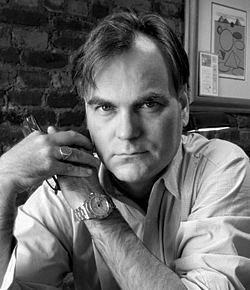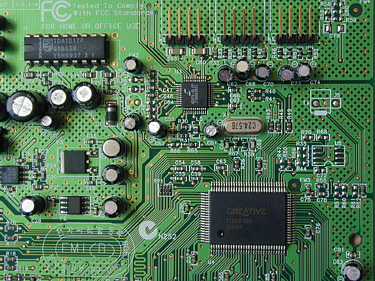CALM Concerns
WASHINGTON—Advanced Television Systems Committee (ATSC) members have voted to approve Annex K of its A/85 Recommended Practice to cover techniques for establishing and maintaining audio loudness for cable and satellite multichannel video programming distributors (MPVDs) utilizing non-AC-3 codecs.
The ATSC has already passed Annex J, which lays out audio loudness techniques for broadcasters using the Dolby Digital AC-3 audio system. The relevant sections of A/85 and these updates are due to be codified by the FCC by Dec. 15, 2011, as required by the CALM (Commercial Advertisement Loudness Mitigation) Act of 2010.

Roger Charlesworth In mid-July, the FCC granted an extension —to August 1—to its request for comments on its proposed rulemaking.
The American Cable Association (ACA) released a statement regarding comments that it had filed with the FCC that explain that A/85 "is essentially a digital broadcast TV standard with limited applicability to cable operators and that overbroad interpretations of A/85 requirements can be technically infeasible and would impose heavy cost burdens on cable operators, particularly small companies that have great difficulty recovering the cost of expensive equipment from a limited number of subscribers [who are largely rural or suburban] on a companywide or single headend basis."
OUT IN FRONT
But the solution is really not that costly or complicated, according to independent media technology consultant and DTV Audio Group executive director Roger Charlesworth. Indeed, the big networks, affiliates and cable companies were already getting out in front of the issue before Congress passed the CALM Act.
"They've all put in the infrastructure to measure and correct the loudness of commercials. If you're in New York on Time Warner or Comcast, every single spot is going to be measured and corrected," he said.
"The FCC has said you can't say the program came to us wrong. We're going to hold everyone accountable. Somebody like Comcast is doing God's work, because they're also getting their service providers to get their acts in order."
That's all well and good for the digital tiers using AC-3, and happily that bitstream, with its associated dialnorm, dynamic range, and other metadata, is simply passed through by distributors. But satellite and cable company SD feeds are typically MPEG-1 Layer 2.
Until commercial content creators and distributors adopt appropriate practices, then loudness disparities will continue to be an issue for the smaller cable companies. However, the technology does exist for those MVPDs to solve the commercial loudness problem, especially as workflows become increasingly file-based.

With many service providers managing loudness upstream, "If I'm a mom and pop cable system, all I have to do is deal with the local insertions," said Charlesworth. "The good news is that, if they want to fix it, there are going to be more and more solutions. It becomes pretty simple at the transcoder or the playout server."
FILE-BASED
Following the same trend as radio, commercials increasingly arrive at a TV station as a digital file sent to the broadcaster's catch server. That workflow lends itself to a file-based loudness solution, whether in real time or at the transcoder.
"Dolby and Linear Acoustic have file-based solutions," Charlesworth noted. "Maybe if you have a real-time workflow, where you're ingesting a spot, then your Evertz or Miranda cards can measure and apply a correction.
"We used to have standalone boxes and standalone servers; now the infrastructure learns. The loudness management, measurement, and correction solutions get embedded in the software or hardware infrastructure. That's the long-term trend."
According to Charlesworth, Annex K is at least partly aimed at DirecTV, which makes a single commercial insertion into both the SD and HD feeds into the set-top box, where there are no gain-staging capabilities. In an attempt to match the NTSC level with the AC-3 audio, he said, the satellite broadcaster is re-authoring dialnorm metadata to raise the level of the HD audio while also turning down the SD audio.
While working with Fox News, he recalled, "I started noticing that there were all these retired people calling saying they'd turned their TV set all the way up but they couldn't hear the station. I got some engineers and we went to a DirecTV SD receiver and plugged the RF modulator out into a Dolby LM100 [meter]. It said –31. So we went to the other end of the equipment room to look at the SD side of a Time Warner cable box. Sure enough, it's –17. This may be why the people were calling!"
The CALM Act was passed in response to viewer complaints, and that will continue to be the benchmark for success, said Charlesworth. "The FCC is going to hold everyone accountable, and it's going to be driven by complaints. If you're a station, you and your network are on the hook until the problem is resolved. If you're an MVPD, you and your service providers are on the hook.
"We're going to judge how good a job we're doing by how many complaints we have. If people are complaining, it isn't fixed yet."
The professional video industry's #1 source for news, trends and product and tech information. Sign up below.
Steve Harvey began writing for Pro Sound News and Surround Professional in 2000 and is currently senior content producer for Mix and a contributor to TV Tech. He has worked in the pro audio industry—as a touring musician, in live production, installed sound, and equipment sales and marketing—since November 1980.
